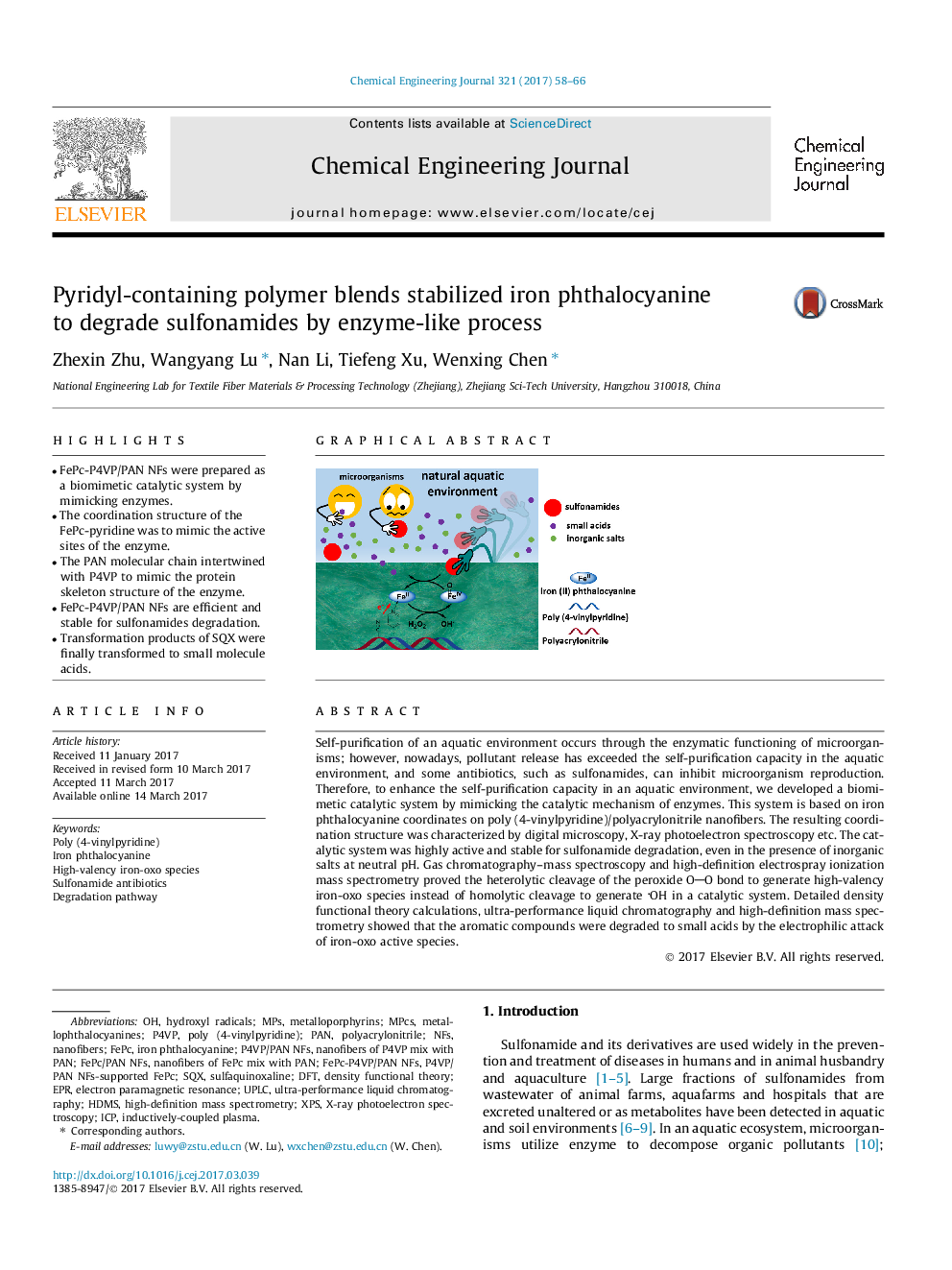| Article ID | Journal | Published Year | Pages | File Type |
|---|---|---|---|---|
| 6465784 | Chemical Engineering Journal | 2017 | 9 Pages |
â¢FePc-P4VP/PAN NFs were prepared as a biomimetic catalytic system by mimicking enzymes.â¢The coordination structure of the FePc-pyridine was to mimic the active sites of the enzyme.â¢The PAN molecular chain intertwined with P4VP to mimic the protein skeleton structure of the enzyme.â¢FePc-P4VP/PAN NFs are efficient and stable for sulfonamides degradation.â¢Transformation products of SQX were finally transformed to small molecule acids.
Self-purification of an aquatic environment occurs through the enzymatic functioning of microorganisms; however, nowadays, pollutant release has exceeded the self-purification capacity in the aquatic environment, and some antibiotics, such as sulfonamides, can inhibit microorganism reproduction. Therefore, to enhance the self-purification capacity in an aquatic environment, we developed a biomimetic catalytic system by mimicking the catalytic mechanism of enzymes. This system is based on iron phthalocyanine coordinates on poly (4-vinylpyridine)/polyacrylonitrile nanofibers. The resulting coordination structure was characterized by digital microscopy, X-ray photoelectron spectroscopy etc. The catalytic system was highly active and stable for sulfonamide degradation, even in the presence of inorganic salts at neutral pH. Gas chromatography-mass spectroscopy and high-definition electrospray ionization mass spectrometry proved the heterolytic cleavage of the peroxide OO bond to generate high-valency iron-oxo species instead of homolytic cleavage to generate OH in a catalytic system. Detailed density functional theory calculations, ultra-performance liquid chromatography and high-definition mass spectrometry showed that the aromatic compounds were degraded to small acids by the electrophilic attack of iron-oxo active species.
Graphical abstractDownload high-res image (121KB)Download full-size image
